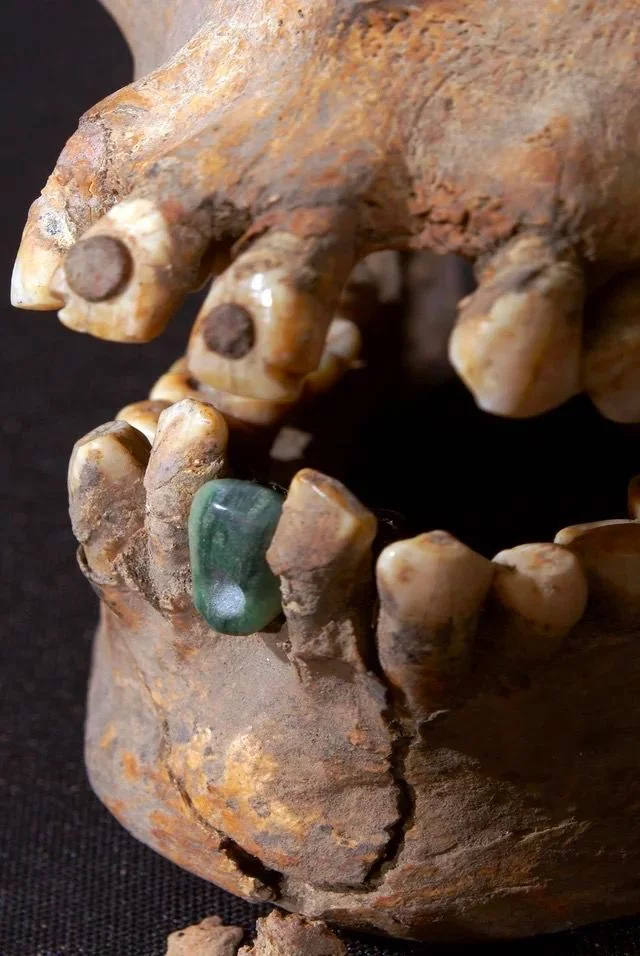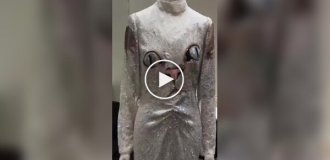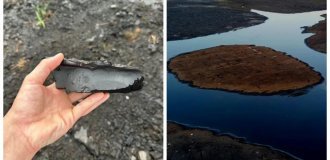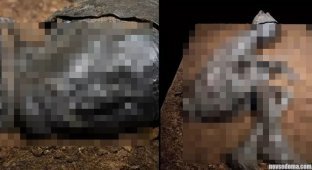Remains of ancestors. Interesting finds (22 photos)
Despite an impressive number of important discoveries, scientists continue to find more and more remains of ancient people, attracting the attention of researchers. 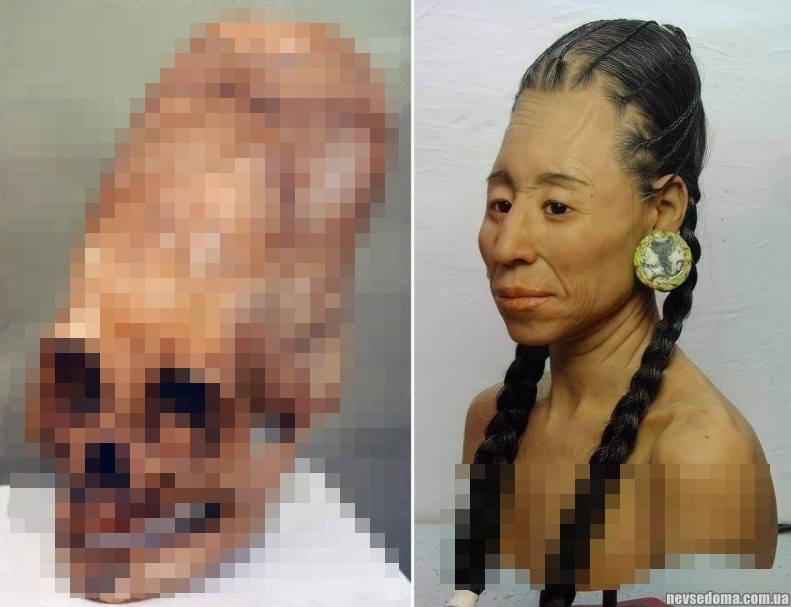
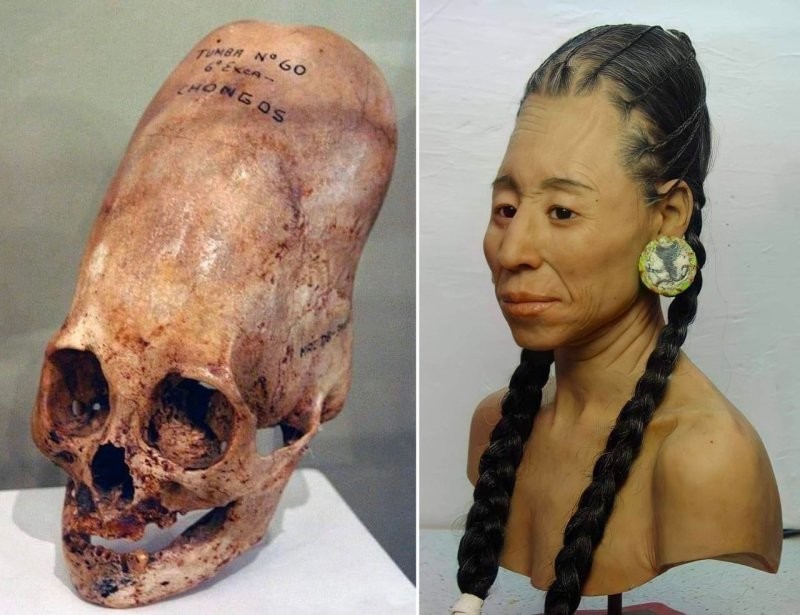
Remains killed by an arrow 4700 years ago. Man 35-40 years old found in a swamp in 1946 in Denmark. It is known that a mortal wound was only the second arrow that hit the chest and pierced the aorta. 
This is a man from Lindow, who died in 20 - 90 AD. At the time of his death, he was about 25 years old. He was 168 cm tall and weighed 60 − 65 kg. He probably did not do manual labor - his musculature was evenly developed, the nails neatly trimmed, and the beard and mustache trimmed with scissors, which may indicate a noble origin. The internal organs were not damaged, which means he was not suffered from no diseases (with the exception of helminths in the intestines).
He died a violent death. The skull was fractured in two places with a heavy weapon, and his throat was cut. In addition, the neck was a thin leather rope was tightened, indicating strangulation, and she neck is broken. One of the ribs on the back was also broken.
Such multiple and varied wounds allowed scientists to suggest that the Lindow man died during the ritual Druid sacrifices. His last meal consisted of roasted grains wheat and barley. Traces of mistletoe pollen, which the Druids considered a sacred plant. 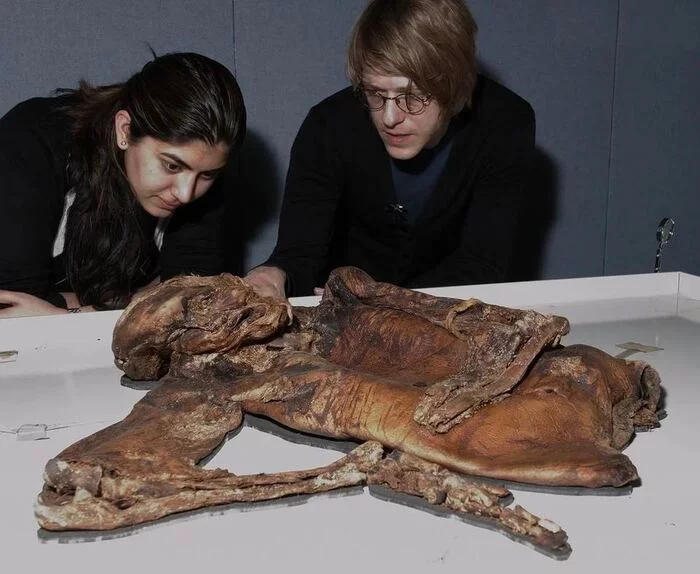
Funeral male mask. Tashtyk culture (Southern Siberia). 3-4 century. AD Found in the Republic of Khakassia on the left bank Yenisei, not far from the Oglakhta ridge. 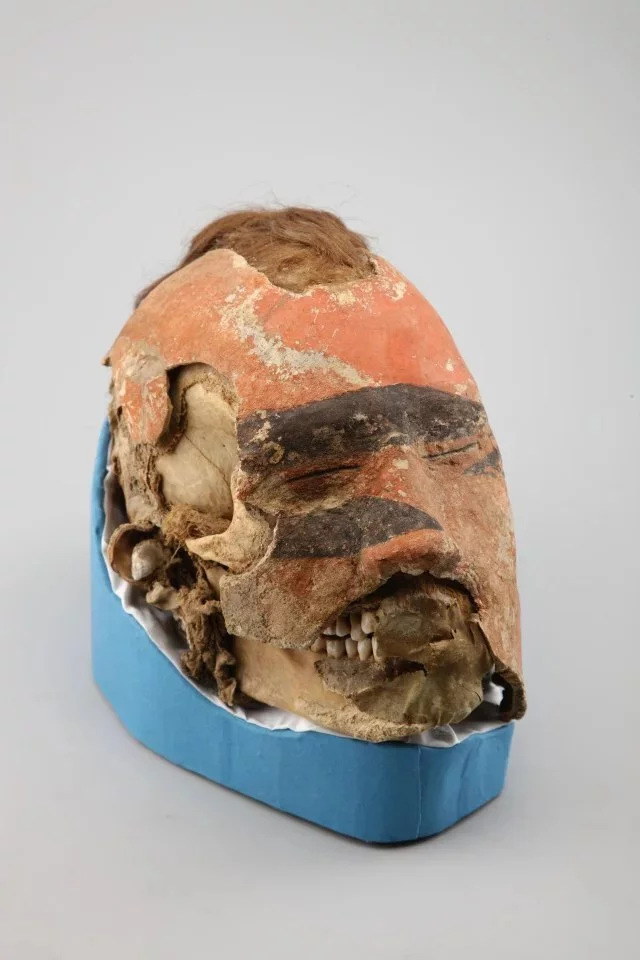
Corinthian helmet found at the site of the Battle of Marathon (490 BC). Found with a warrior's skull. 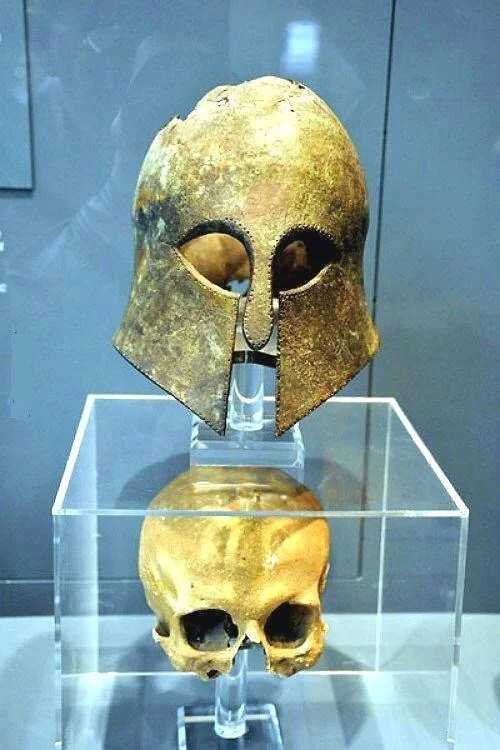
Perhaps the most famous swamp mummy: the man from Tollund - a man who lived around the 4th century BC, whose body was discovered in one of the peat bogs in Jutland (Denmark). The find is notable for that thanks to natural tanning, the body is incredibly well preserved - even the bristles are preserved and wrinkles are clearly visible. The man was low, as befits almost all of our ancestors. Age at the moment death was about 40 years, and death was due to strangulation. Quicker it was all murder or sacrifice. Studying digestive tract of a man from Tollund gave detailed information about time and composition of his last meal. It turned out that for about 12-24 hours before his death, he ate porridge cooked on water from grains and seeds (as cultivated and wild) - in total, about 40 of them were identified species, including barley, flaxseed, etc. Traces of meat, fish or no fruit was found. This fact suggests that the person of Tollund died in late winter or early spring. 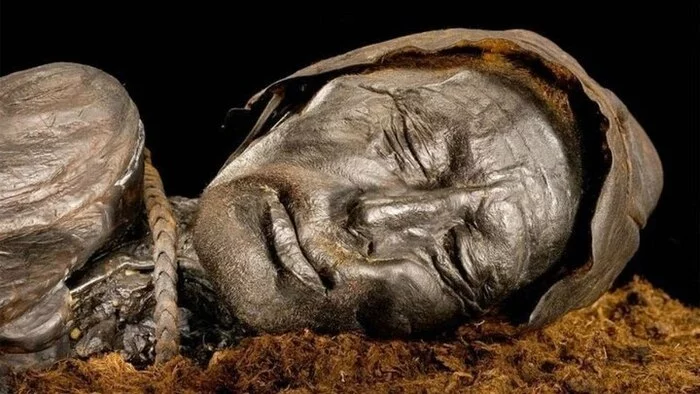
A 3,000-year-old wooden prosthetic toe found on an Egyptian woman's mummy. 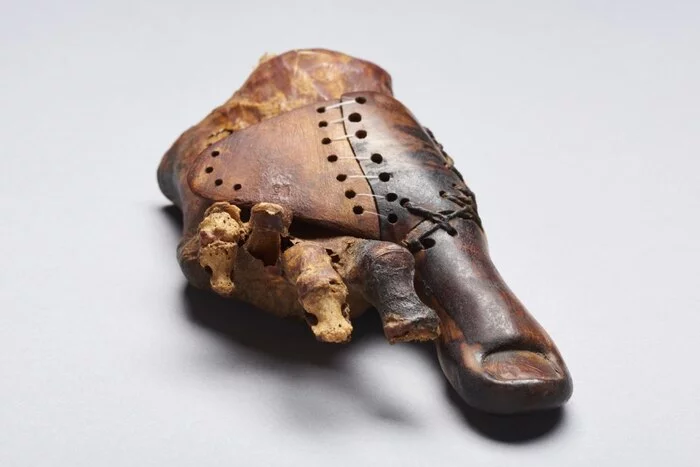
Tattoo on the body of a man who lived 1700 years ago. Found in present-day Mexico. 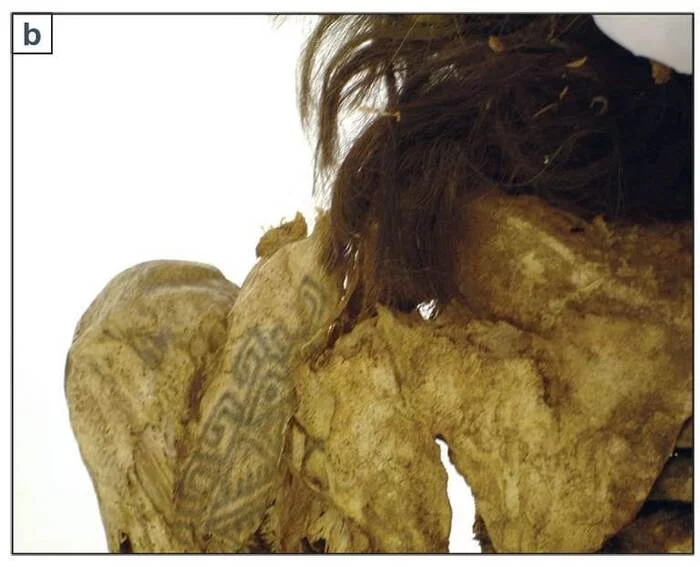
The body of a girl aged 16-18 was found in a grave in Denmark, which dates back to 1370. The coffin was carved from a log. At the head there was a small box made of birch bark, in which there were an awl, bronze hairpins and hairnet. She was also equipped on her last journey bucket of wheat beer brewed with honey, bog myrtle and cranberries 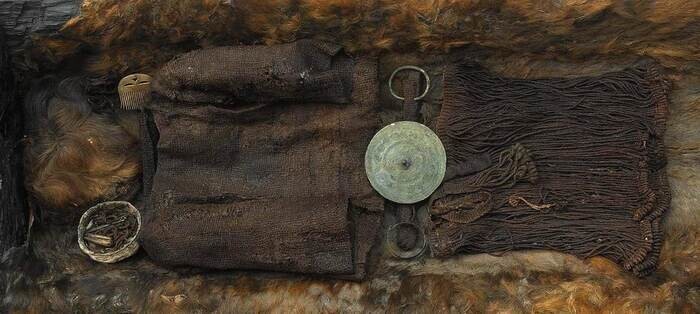
An early example of successful cranioplasty. The patient survived, what testifies to the accustomed gold plate. 4th century Peru. 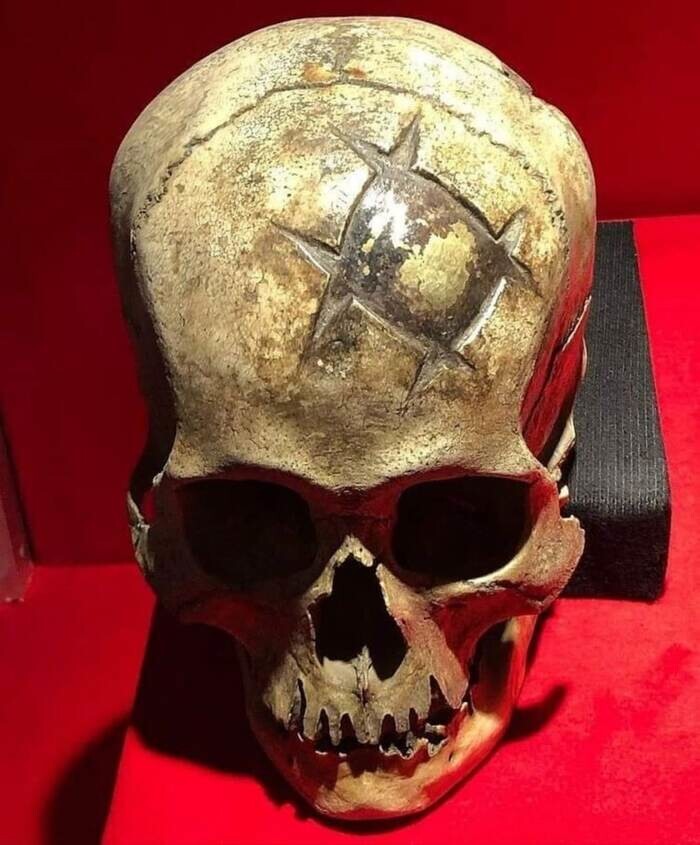
Brain from Heslington. It contains memories of what the world looked like ~2600 years ago. It has been preserved thanks to happy coincidence of factors - a humid and anoxic environment under earth, although scientists are not entirely sure if there are other factors.
The brain is extremely well preserved. So much so that some its proteinand, at the time of discovery and its study, they still gave an immune response.
The person who owns the brain was 26 to 45 years old, and death was due to displacement of the vertebra, so most likely - he was hanged. It belonged to the haplogroup J1d, which had not previously been found in people from UK territory, neither living nor dead. Yes, and in general around the world, this haplogroup is very rare.
Heslington, England. 7th-5th century BC. 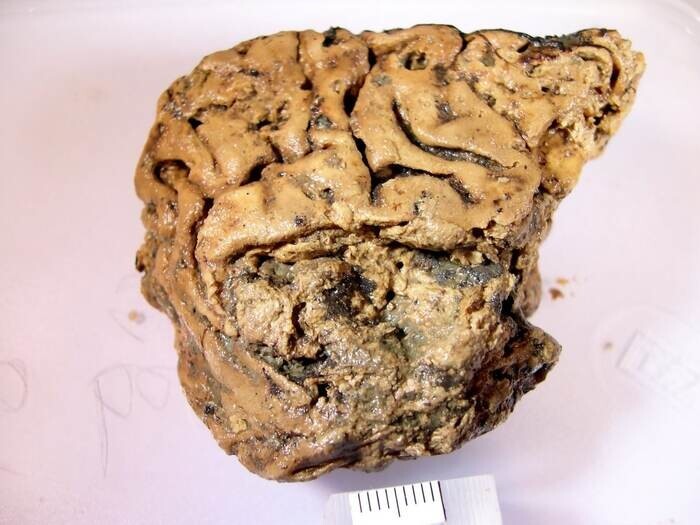
Humerus, with postoperative copper plate. It was found that after the plate was placed, the bone grew, which indicates a successful operation. The plate was placed, probably in as an antiseptic. Copper has antimicrobial and antiviral properties properties.
The find is dated 1260 - 1527. Found in Sweden. 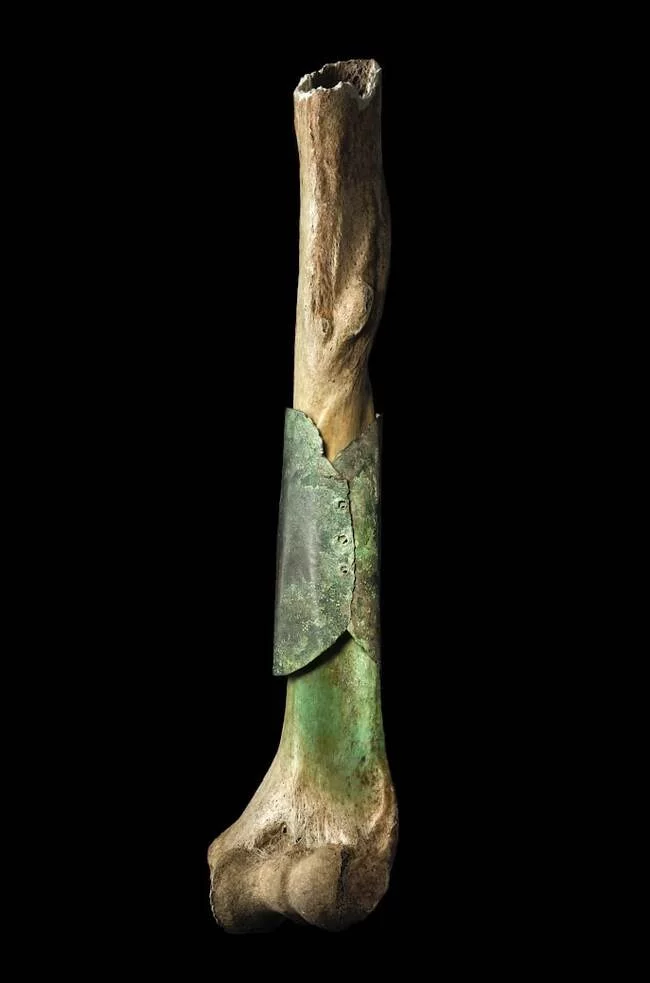
The mummy of a noble woman from the territory of modern China. She lived 3800 years ago. This is one of the Tarim mummies, which, due to Caucasoid characteristics were considered migrants from West Asia, although new study shows they were actually straight descendants of the local population of the Ice Age. 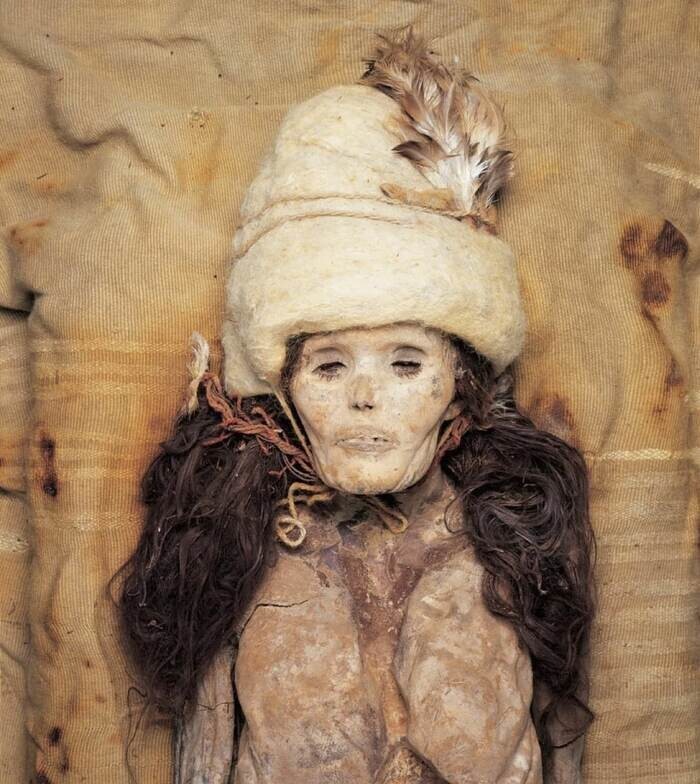
Skull from Peru, 2000 years old. The iron plate is a surgical implant that was implanted after a combat injury. Judging by broken bone around the plate, she successfully fixed the skull. 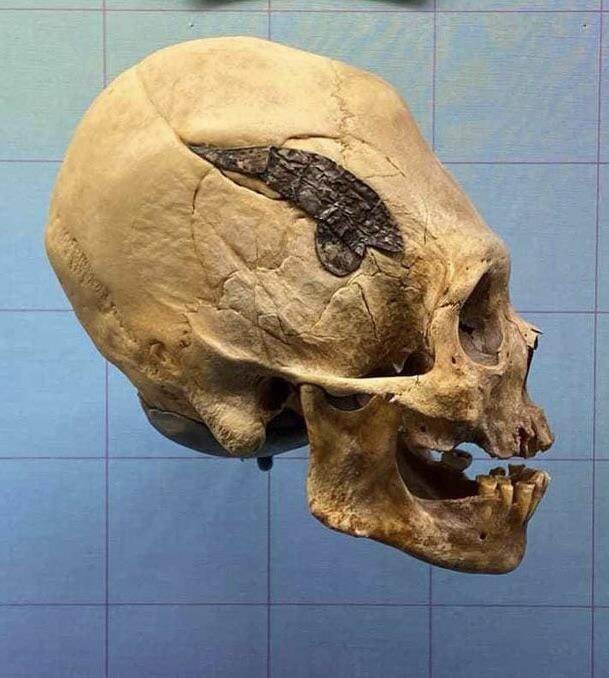
Head of the Swedish King Charles XII, who was assassinated in 1718 by an unknown shell that passed right through during the siege of the Norwegian Fortress Fredriksten. 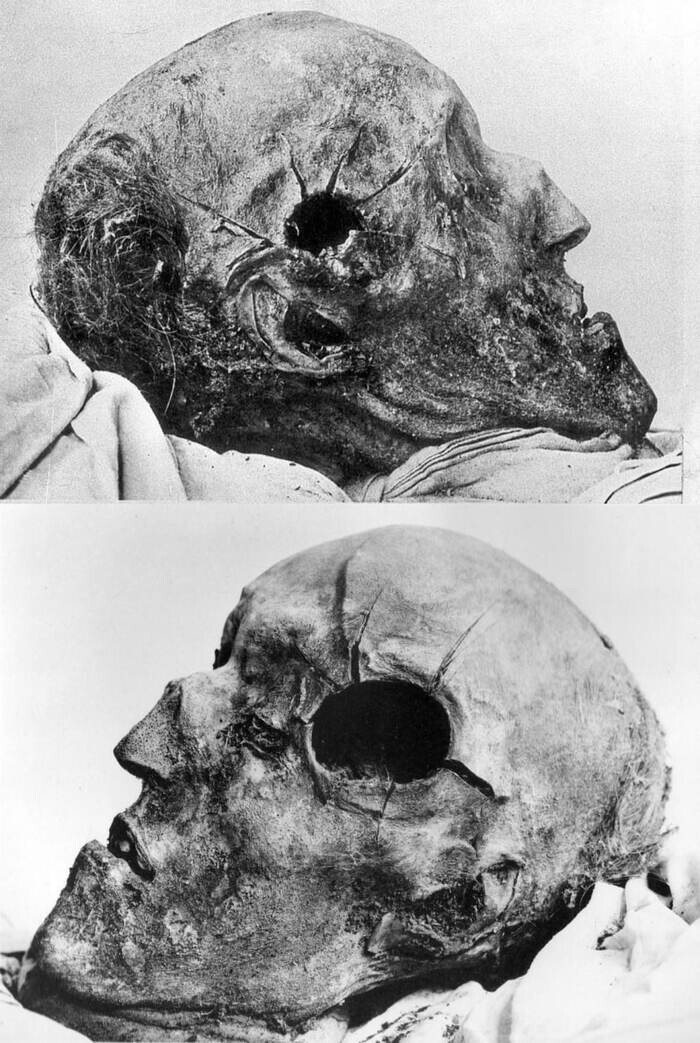
One of hundreds of elongated skulls discovered in 1928 on the Paracas Peninsula in Peru. Skull deformity was performed by culture Paracas (800-100 BC) by tightly wrapping a cloth around the head in during the first few years of life to elongate the skull. 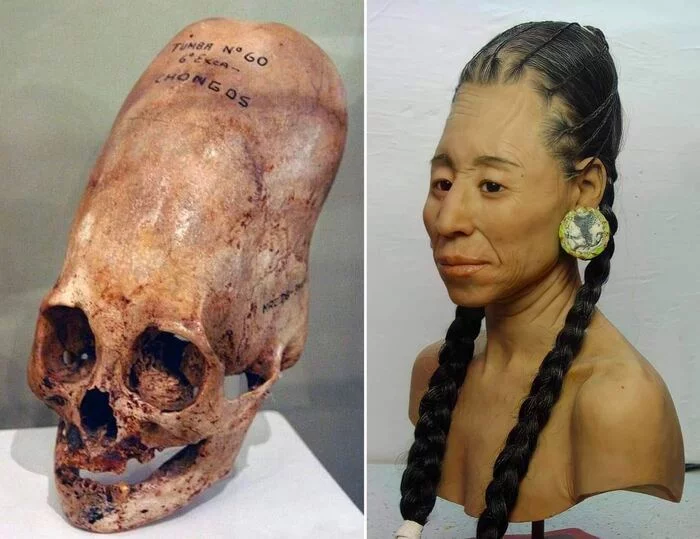
Meet Etzi. Ice mummy, 5300 years old years, found in the Alps on the border of Austria and Italy. Otzi is real collection of interesting facts.
At the time of his death, Ötzi was approximately 165 cm tall, weight - 50 kg, foot size - 38, eyes are brown, and age - 45-46 years.
Ötzi had about 57 tattoos of dotted lines and crosses. The method of their creation differs from the modern one - they made small cuts, after which charcoal was poured into them.
Remains of bran, roots, fruit and muscle tissue of two types, corresponding to the meat of chamois and deer.
The high content of copper and lead in the hair suggests that Ötzi was involved in the production of copper.
Ötzi did not use matches, but carried a birch bark box with glowing coals to kindle a fire.
Ötzi was an old man for his time. Like everyone else ancient people, Ötzi's life was harsh: he had injuries spine and broken ribs and nose, and the big toe of the left foot was frostbitten.
On three preserved nails, scientists found the Bo line - a transverse band indicating a severe infection, hunger or prolonged exposure to cold. Ötzi's lungs blackened with soot, which suggests that he spent a lot of time around the campfire. poor guy also suffered from fleas and parasites, and was infected with Helicobacter pylori.
In addition, he had age-related health problems: degenerative arthritis, worn joints, calcium deposits in vessels, including in the aorta, as well as gallstones. his teeth were also very worn, and the upper jaw on the left side was damaged especially strongly, which suggests that he often used his teeth as tool. However, he did not have caries.
Ötzi did not have a twelfth pair of ribs and wisdom teeth.
In 2013, scientists analyzed male blood donors from Tyrol and found 19 people who, with a high degree of probability, are his descendants.
Despite the fact that scientists managed to find out about Ötzi incredibly many details, the cause of death has not been established. Exists many versions - from hypothermia to violent death. The most the romantic version says that Ötzi died as a result of two-day fight and at some point saved a wounded comrade carrying him on his shoulder.
Ötzi steadfastly endured all the bullying of scientists, and now rests in the South Tyrol Museum of Archeology, in Italy. There he lies in sarcophagus, in whicho maintained at -6°C and air humidity 98%. 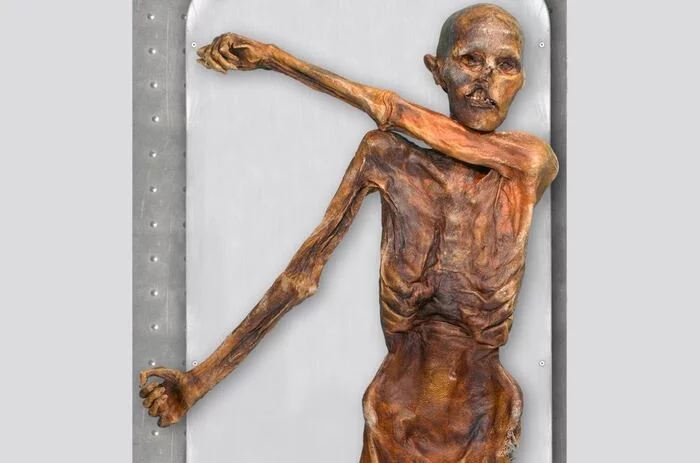
Aztec skull from Tonal with golden eyes, jade forehead decoration and covered with turquoise mosaic.
1300–1521 Mexico. 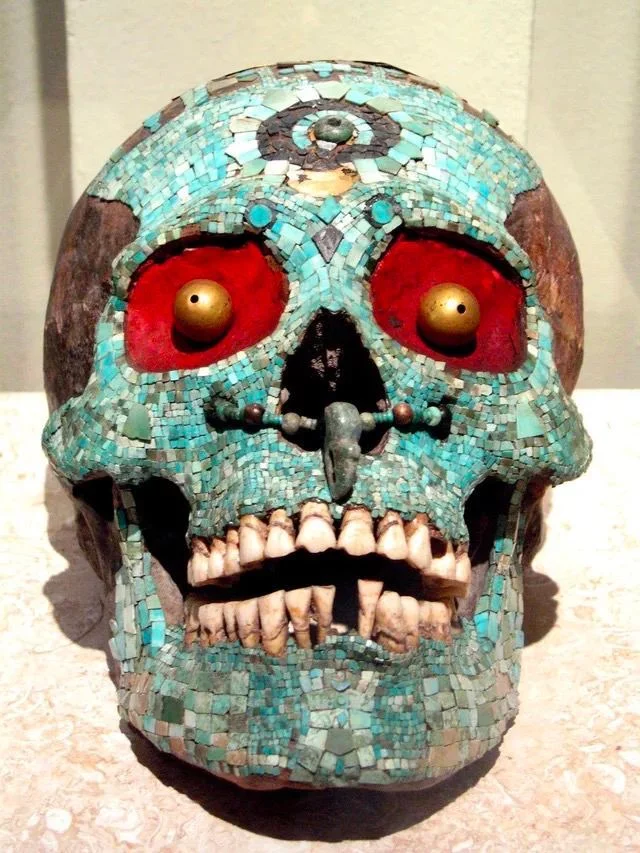
Flint arrowhead in bone, found at the site of the oldest known battle in Europe. 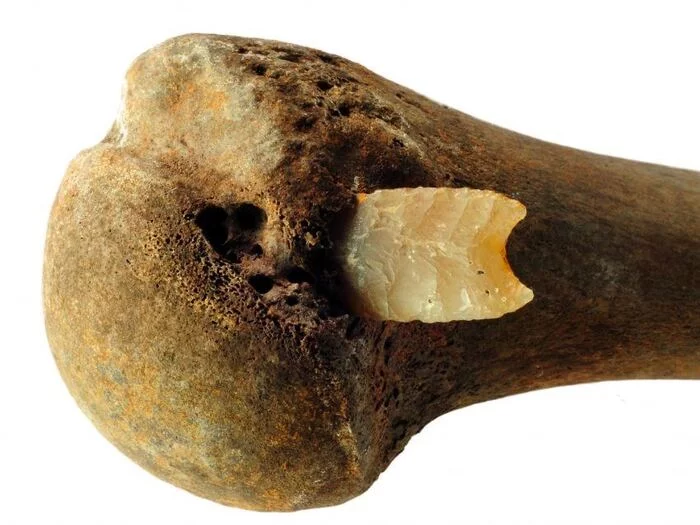
Archaeologists unearth the victims of the eruption of Vesuvius in Pompeii. May 1, 1961 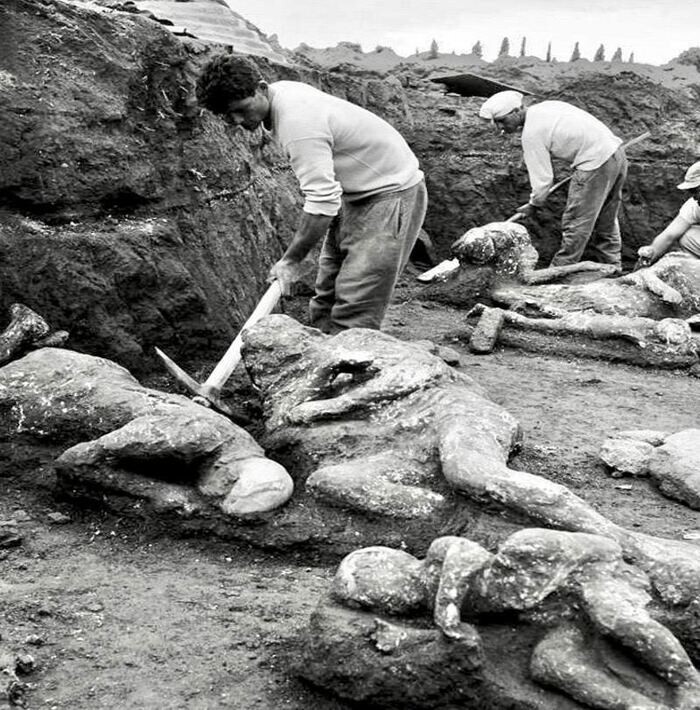
Before you is the skull of "the most unfortunate man." This is a Neanderthal from the Shanidar cave and the list of his ailments is impressive.
He was deaf, his right arm was amputated above elbow, and on the remaining stump there are traces of fractures. The right side of it body, most likely, was paralyzed. He was visibly limping and experiencing pain with every step. Traces of a fracture were preserved on his left foot and severe arthritis of the joints, he suffered from degeneration of bone tissue and skeletal hyperstosis (ossification of ligaments and tendons), as a result of which, he also suffered from pain in the joints. He got hit hard the face that caused damage to the left eye socket, which is most likely leading to partial or complete blindness.
Despite all his injuries, the poor fellow lived a very long time, by the standards of that time, life - he died at the age of about 45 and survived many of his fellow tribesmen (who, no doubt, took care of him).
This man was found on the territory of modern Iraq. The age of the find is 50,000 years. 
The skull of a Teotihuacan woman with a jade tooth implant.
The woman's upper incisors are adorned with round pyrite stones. This technique was practiced in Maya cities in southern Mexico, in Guatemala and Belize.
350-450 AD AD Mexico 